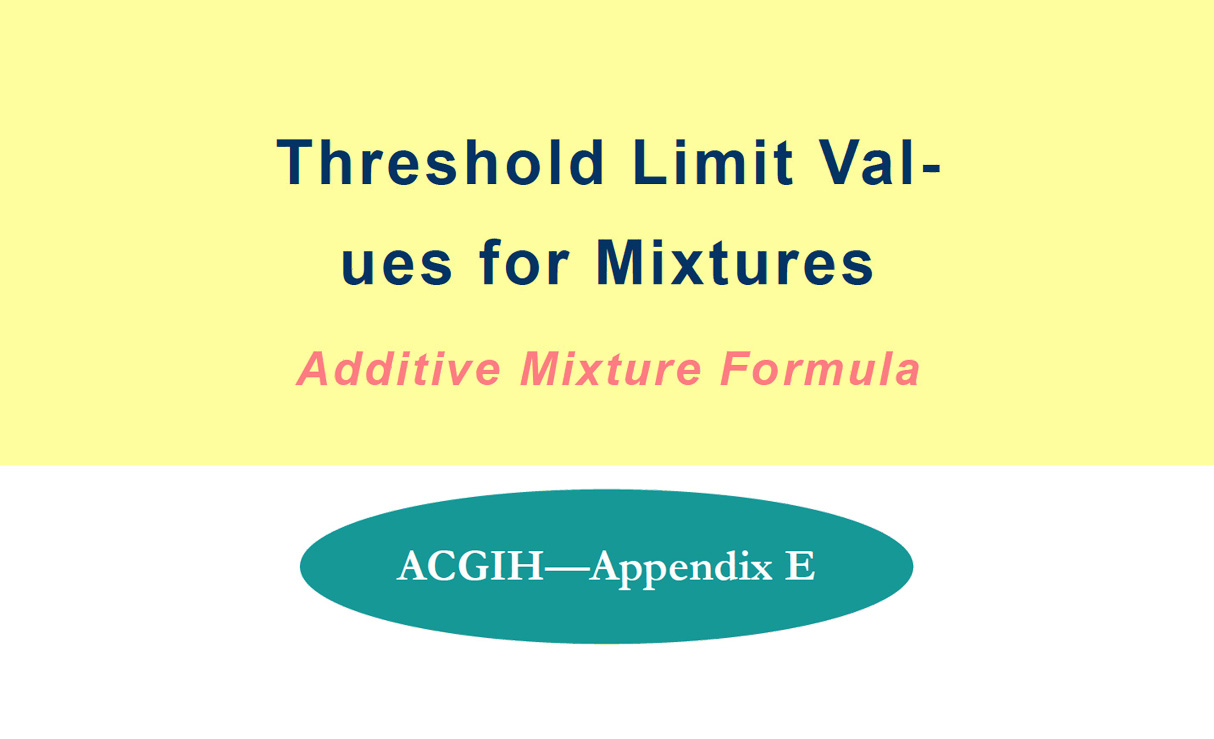ACGIH Appendix E

Given that additive mixture calculation is highly complex and time consuming, CASSEN has set aside resources to develop a module to help clients who uses our lab on open characterization or multicomponent analysis to obtain additive mixture threshold limits for an additional charge. Please enquire our laboratory regarding this service.
ACGIH has incorporated calculation of threshold limit value for mixture formula since 1963 in view of the fact that the work environment is often composed of multiple chemical exposures. It is recommended so that multiple exposures that comprise such work environments be examined to assure that workers do not experience harmful effects. There are several possible modes of chemical mixture interaction.
Additivity occurs when the combined biological effect of the components is equal to the sum of each of the agents given alone. Synergy occurs where the combined effect is greater than the sum of each agent. Antagonism occurs when the combined effect is less. The general ACGIH mixture formula applies to the additive model. It is utilized when additional protection is needed to account for this combined effect.
When two or more hazardous substances have a similar toxicological effect on the same target organ or system, their combined effect, rather than that of either individually, should be given primary consideration. In the absence of information to the contrary, different substances should be considered as additive where the health effect and target organ or system is the same. That is, if the sum exceeds unity as per the following formula:

Then the threshold limit of the mixture should be considered as being exceeded (where Cl indicates the observed atmospheric concentration and Tl is the corresponding threshold limit). The additive formula applies to simultaneous exposure for hazardous agents with TWA, STEL, and Ceiling values. The threshold limit value time interval base (TWA, STEL, and Ceiling) should be consistent where possible. When agents with the same toxicological effect do not have a corresponding TLV® type, use of mixed threshold limit value types may be warranted. Table E-1 lists possible combinations of threshold limits for the additive mixture formula. Multiple calculations may be necessary.
Where a substance with a STEL or Ceiling limit is mixed with a substance with a TLV-TWA but no STEL, comparison of the short-term limit with the applicable excursion limit may be appropriate. Excursion limits are defined as a value five times the TLV-TWA limit. The amended formula would be:

Where:Â T1STEL = the TLV-STEL and T2 = the TLV-TWA of the agent with no STEL.
TABLE E-1. Possible Combinations of Threshold Limits When Applying the Additive Mixture Formula
| Full Shift or Short Term | Agent A | Agent B |
|---|---|---|
| Full Shift | TLV-TWA | TLV-TWA |
| Full Shift | TLV-TWA | TLV-Ceiling |
| Short Term | TLV-STEL | |
| Short Term | TLV-Ceiling | TLV-Ceiling |
| Short Term | Excursion limits where there is no STEL (5 times TLV-TWA value) | TLV-Ceiling OR TLV-STEL |
| Short Term | TLV-STEL | TLV-Ceiling |